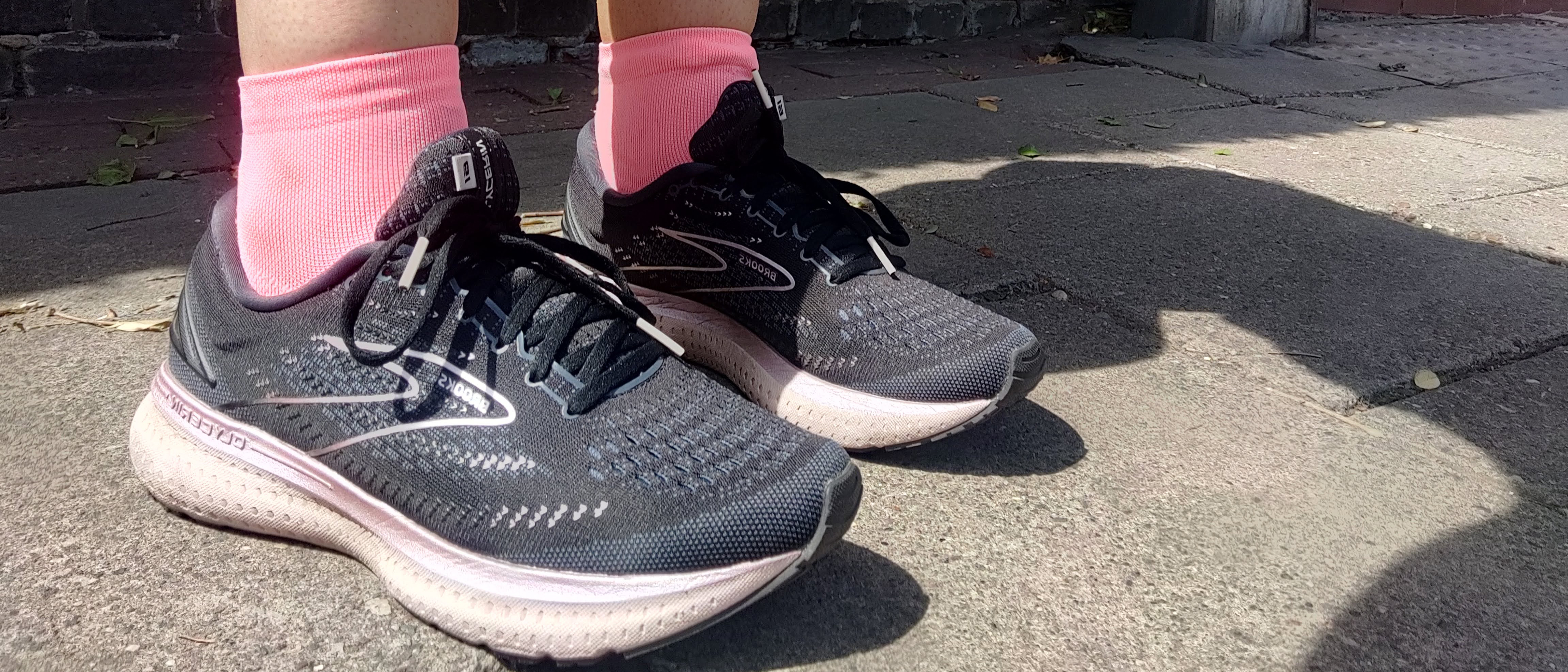Live Science Verdict
Reliable and supportive, the Brooks Glycerin 19 is an impressive neutral running shoe, perfect for steady, everyday kilometers and longer distances.
Pros
- +
Cushioned support
- +
Smooth-and-stable ride
- +
Great for steady mileage
Cons
- -
Size runs small
- -
Achilles discomfort to begin with
- -
Not designed for speed
Why you can trust Live Science
The Brooks Glycerin 19 is the latest model in Brooks’ cushion collection, favored for steady kilometers alongside the Ghosts, Adrenaline GTS and Trace. It’s designed for neutral runners – those who have a relatively high arch or who don't overpronate when they go through their gait cycle – and provides a heightened level of cushioning, making it one of the best running shoes for supination.
Compared with its predecessor, the Glycerin 18, the 19 is 0.5cm wider through the forefoot and 0.5cm wider through the widest part of the heel. This allows for more flexibility underfoot. The biggest change is that the Glycerin 19 packs in more DNA Loft – the company's signature midsole cushioning. The idea is that the foam cushioning adapts to your stride, helping to keep injuries at bay. But don’t worry about the shoe feeling heavy – Brooks has also packed extra air into the midsole compared to previous models to keep the same lightweight feel.
In our Brooks Glycerin 19 review, we’ll dive further into the design, build and performance of this popular running shoe, to see if it’s right for you.
How we tested
We put the Brooks Glycerin 19 through its paces. Starting off with a couple of shorter runs to get used to the fit and feel, we then took the shoes for a couple of longer runs to make sure our feet were well adjusted. For the ultimate test, we committed to running a full marathon in the Brooks Glycerin 19. Read on for our verdict.
Build and cushioning
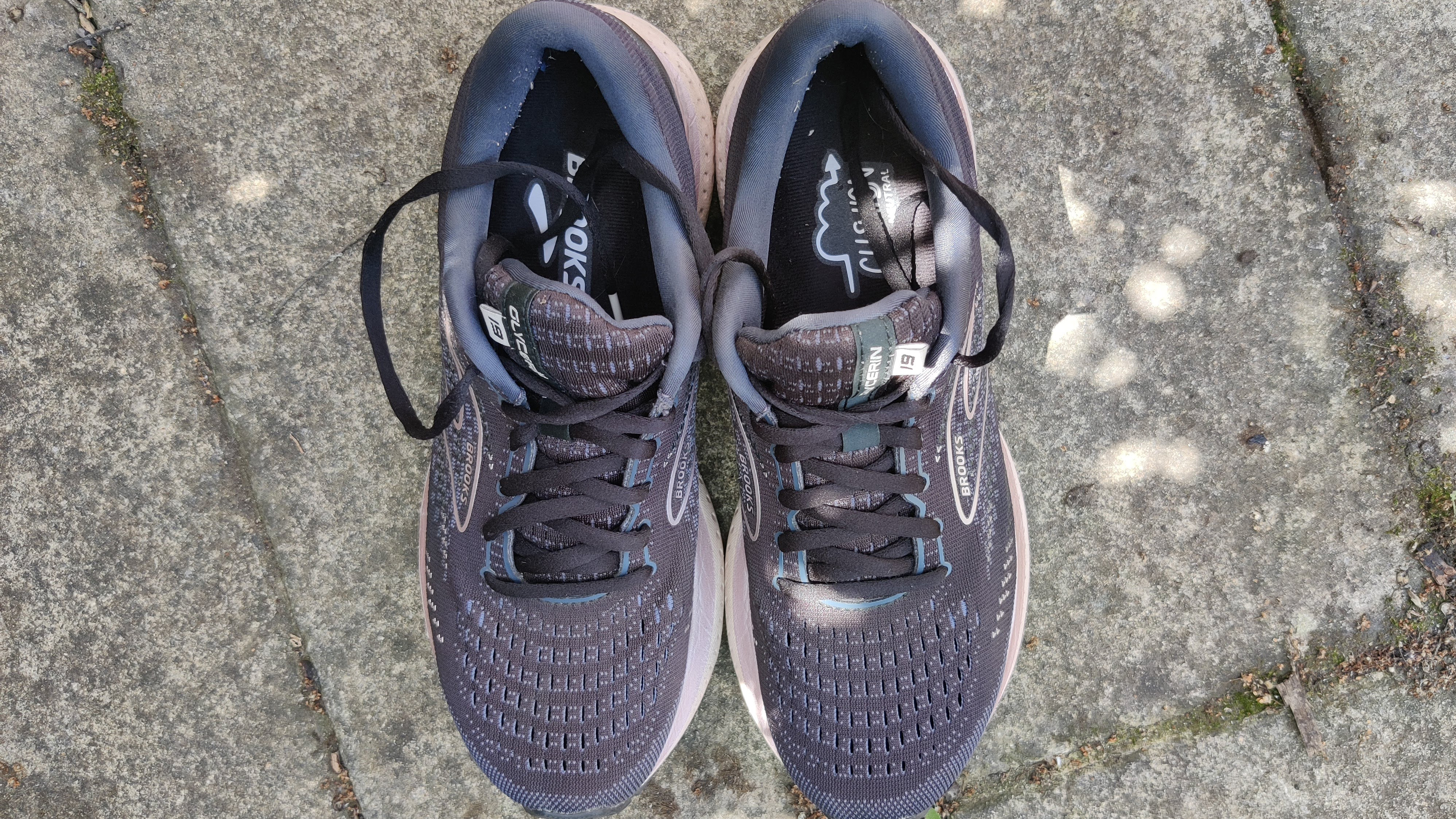
The Glycerin 19 features 31mm of cushioning and has a 10mm heel-to-toe drop on both the men's and women's shoe. Brooks uses its signature DNA Loft technology in the midsole. This is composed of EVA foam, rubber and air to provide a cushioned-yet-responsive run. The shoe doesn’t feel heavy: the women’s weighs in at 9oz, and the men’s 10.2oz. The result is a softness that doesn’t feel like you’re wearing a clunky, heavy shoe.
Another key difference compared with the Glycerin 18 is the depth of the toe box: this is the height of the toe region from your first to your fifth toe. The Glycerin 19 is shallower than the 18, with a more secure fit on top of the foot. While this provides more stability, it means you may want to size up more than usual. We opted for a UK 8.5 (US 10.5) in wide fit, being a UK 8 in regular sneakers. However, we could have done with going up a whole size. Our feet weren’t cramped, but they’re snugger than similar shoes like the New Balance Fresh Foam 1080 v12.
The Brooks Glycerin 19 is available in two versions: standard and GTS (go-to-support). The latter is designed for those who tend to overpronate, and features GuideTails technology in the midsole. Here, denser sections of foam are added to the sides of the shoe to stop the foot from collapsing inwards when you run. This is designed to offer better ankle, knee and hip support and reduce the chance of injury.
Get the world’s most fascinating discoveries delivered straight to your inbox.
Not sure how running shoes should fit? We’d recommend visiting your local running store to get a gait analysis – this will help you to determine what type of shoe suits your running style.
- Related: Supination vs pronation
Design and upper
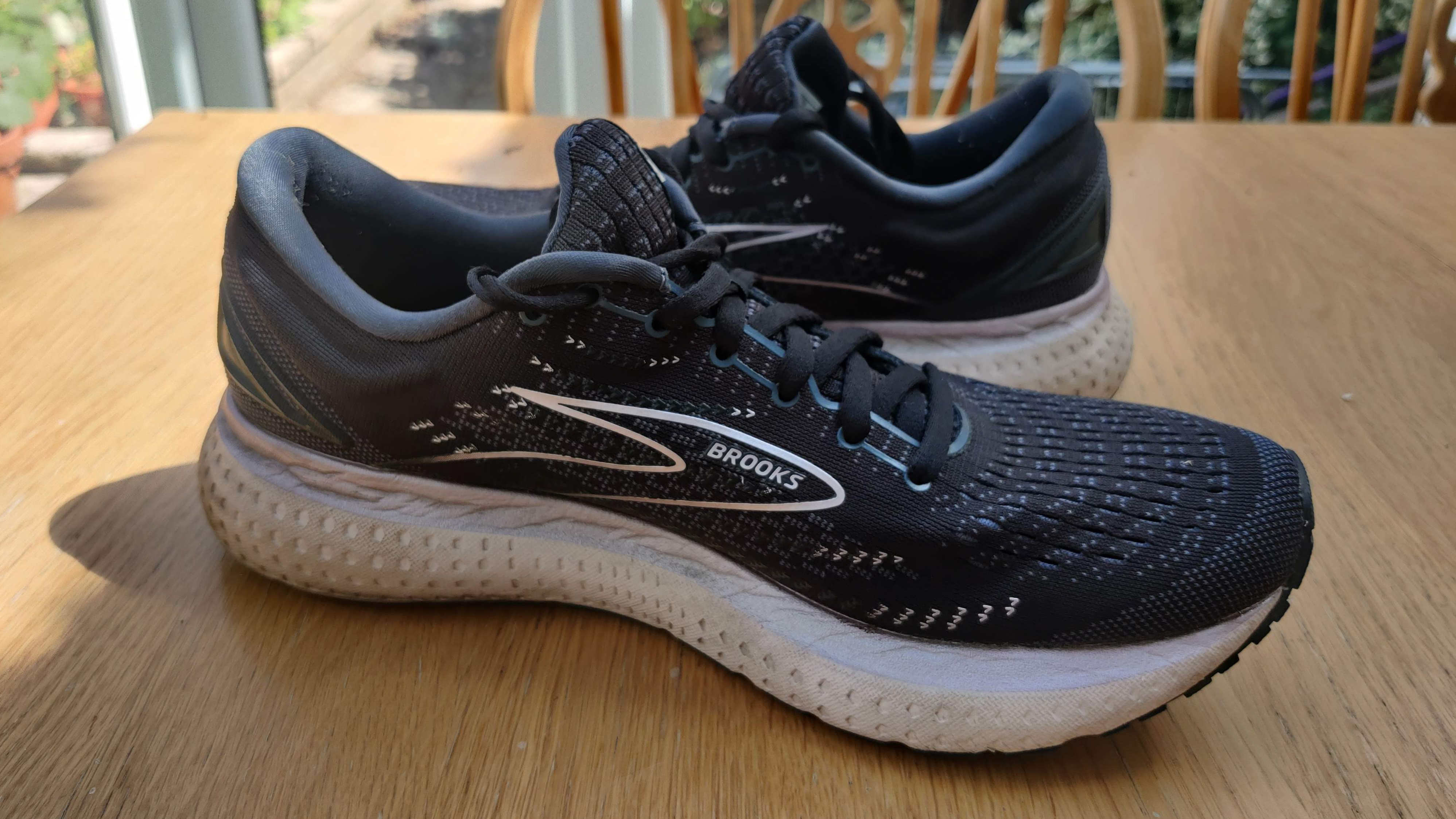
The Glycerin 19 isn’t the most attractive shoe, but neither is it the least. It’s got a 'sportier' look about it compared with the 18, and it’s available in nine colors for women and six for men. Men’s are also available in medium or wide fit, with women’s coming in narrow, medium and wide.
The upper is a 3D engineered mesh that almost feels like a knit, and contours to the shape of your foot. It feels secure, but not suffocating. The tongue and gusset are cushioned and extend all the way over the top of the foot, too, so you don't have to worry about rubbing on those particularly long days. Compared with the 18, the interior has been updated to be softer.
Outsole
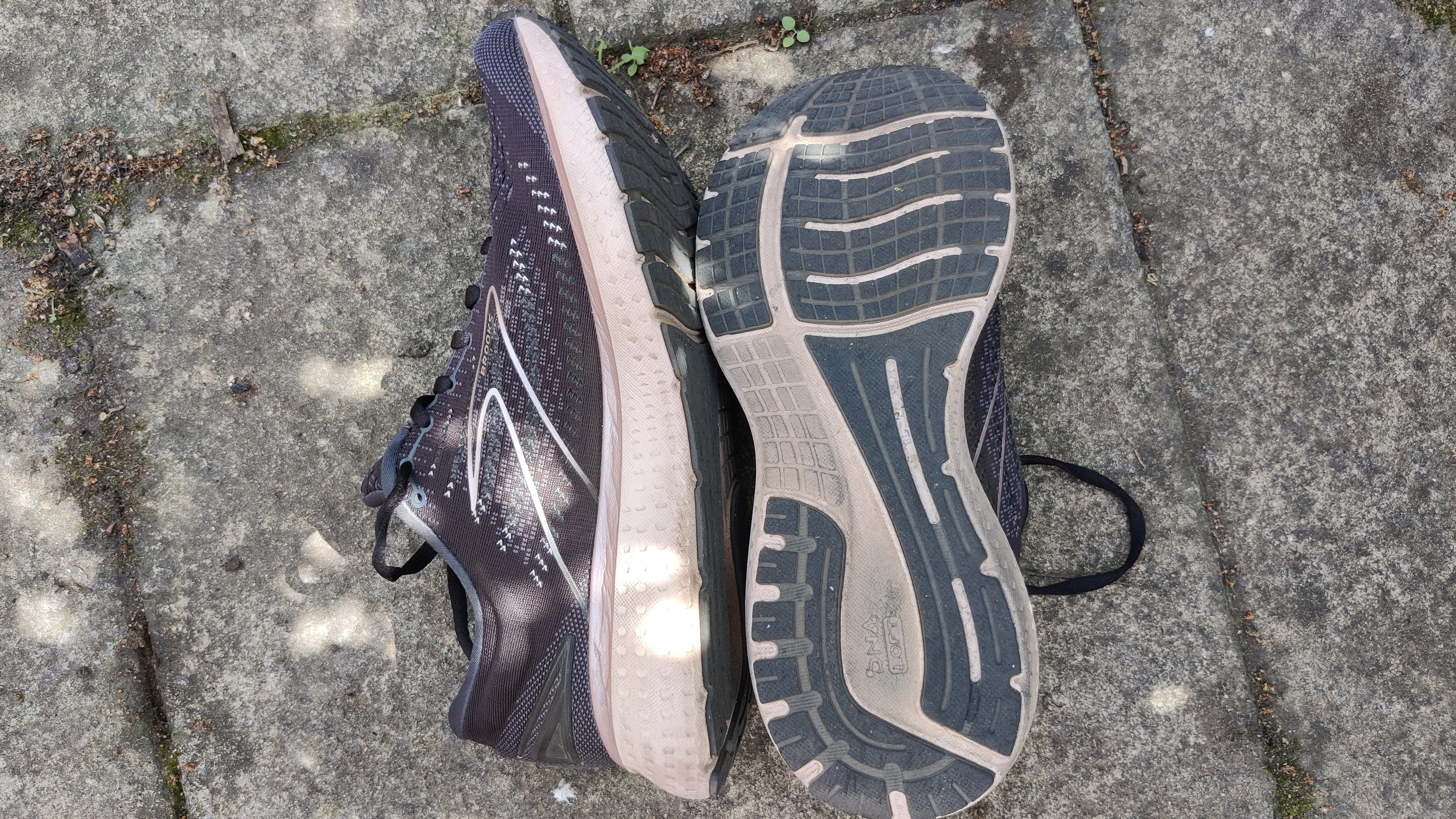
The outsole of the Glycerin 19 uses soft, blown rubber. This helps to soften landings and increase ground feel, though the drawback is that the rubber wears down faster than normal. As a general rule, it's recommended that you replace your running shoes every 500 to 750 kilometers.
The Glycerin 19 is designed for roads, and probably wouldn’t hold up on tougher terrains. In fact, even on wet ground the Brooks Glycerin 19 can feel slippy, so bear this in mind if you live in a drizzly climate.
Performance

The Glycerin 19 is designed for easy paces, and this is where it excels. We ran in the shoes straight out of the box, taking them on a couple of shorter, relaxed runs. We found that the shoes caused some achilles discomfort and blistering on the right foot to begin with, but this subsided after about 3-4 wears. Overall, the ride was pillowy and comfortable. It’s clear why these have been one of Brooks’ most popular running shoes for several years.
We did push the shoes to a sub 4.45 per kilometer pace to see how they held up. While they felt okay, you have to work a lot harder and certainly don’t feel as if you’re being propelled along like with the Nike ZoomX Vaporfly Next%.
We would, however, recommend the Glycerin 19 as a great shoe for first-time marathoners, or for those coming back from injury who aren’t concerned about time. During our fifth marathon, we ran in the Brooks Glycerin 19 and found they helped us to maintain a steady pace throughout. If you’re looking to qualify for the Boston Marathon, however, you’ll want a more responsive ride.
Verdict

If you’re new to running, or looking for a reliable shoe that can withstand steady miles, the Brooks Glycerin 19 is an excellent choice. The plush cushioning is great for nice-and-easy runs, and the lightweight feel allows you to pick up the pace. But keep in mind that the Glycerin opts for comfort over performance, so if you’re looking to smash a PB or take on pacey interval sessions, you’ll want to rotate another shoe alongside it and reserve these for your slower, recovery runs.
Alternatives

If you love maximum cushioning, but want a running shoe without such an excessive stack height, try the ASICS Gel-Nimbus 24 (above). Compared with the Glycerin 19’s 31mm stack, the Gel-Nimbus 24 comes in at 25mm for the men’s shoe and 27mm for the women’s. For female runners, the ASICS Gel-Nimbus 24 has a higher heel-to-toe drop to accommodate for the gender-specific differences of the feet. Price wise, there isn’t much difference between the two.
For a more stylish look, try the Adidas Ultraboost 22: it comes with a more-premium price tag though the colorways are attractive and sleek. You get a similarly cushioned feel to the Brooks Glycerin 19 and user reviews report that the build quality means the shoes can withstand more kilometers before you need to repurchase.
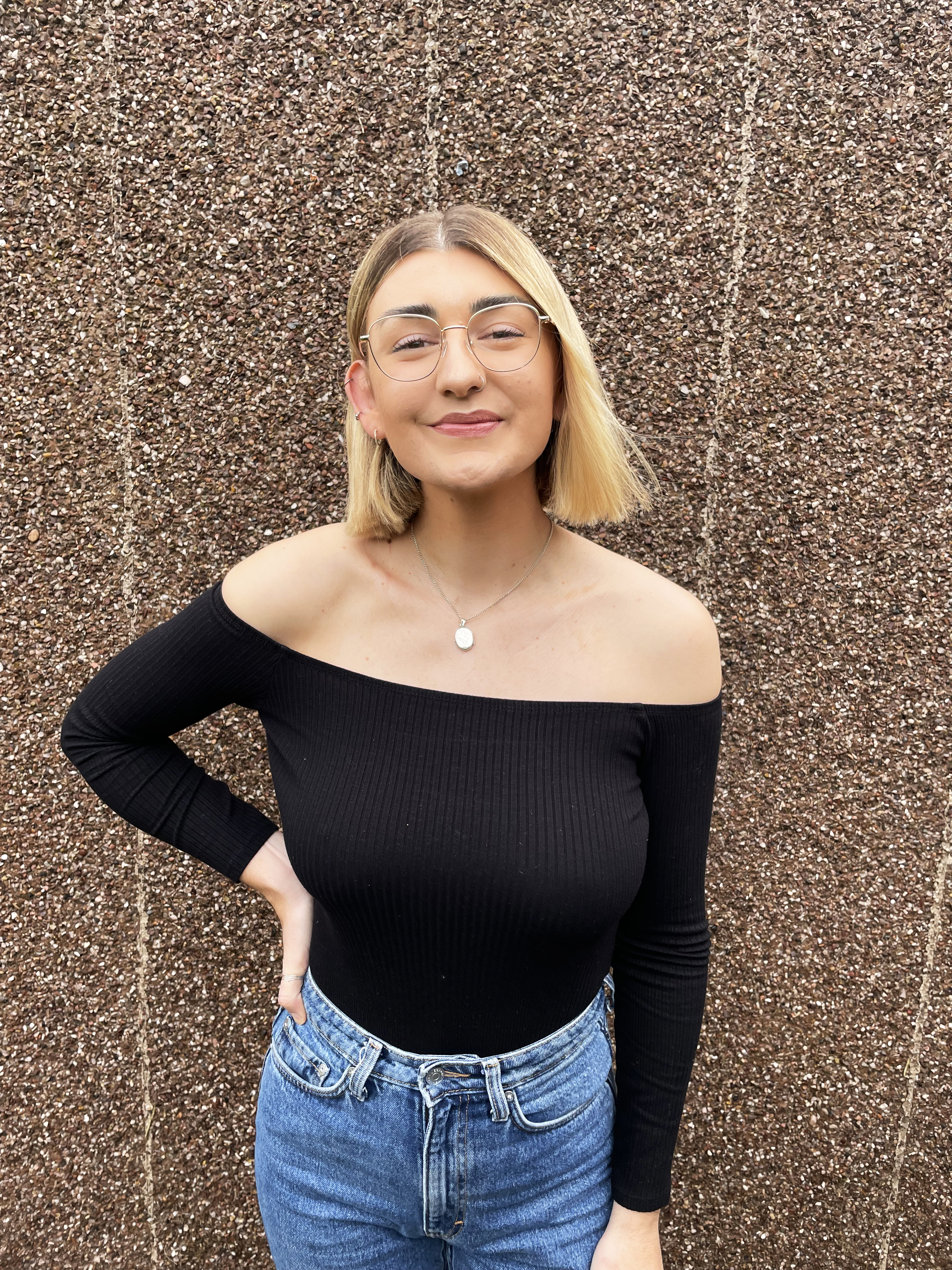
Alice is the health channel editor at Live Science. She also reviews tech and fitness products for our buying guides, from air purifiers to treadmills. She has worked across multiple knowledge and wellness brands at Future, including Fit&Well, Coach, T3, TechRadar and Tom's Guide. Alice holds a bachelor's degree in journalism from City, University of London, where she spent a year studying nutrition, dietetics and public health at Queensland University of Technology in Brisbane. A self-confessed running fanatic, she's completed six marathons and qualified for the Boston marathon.
